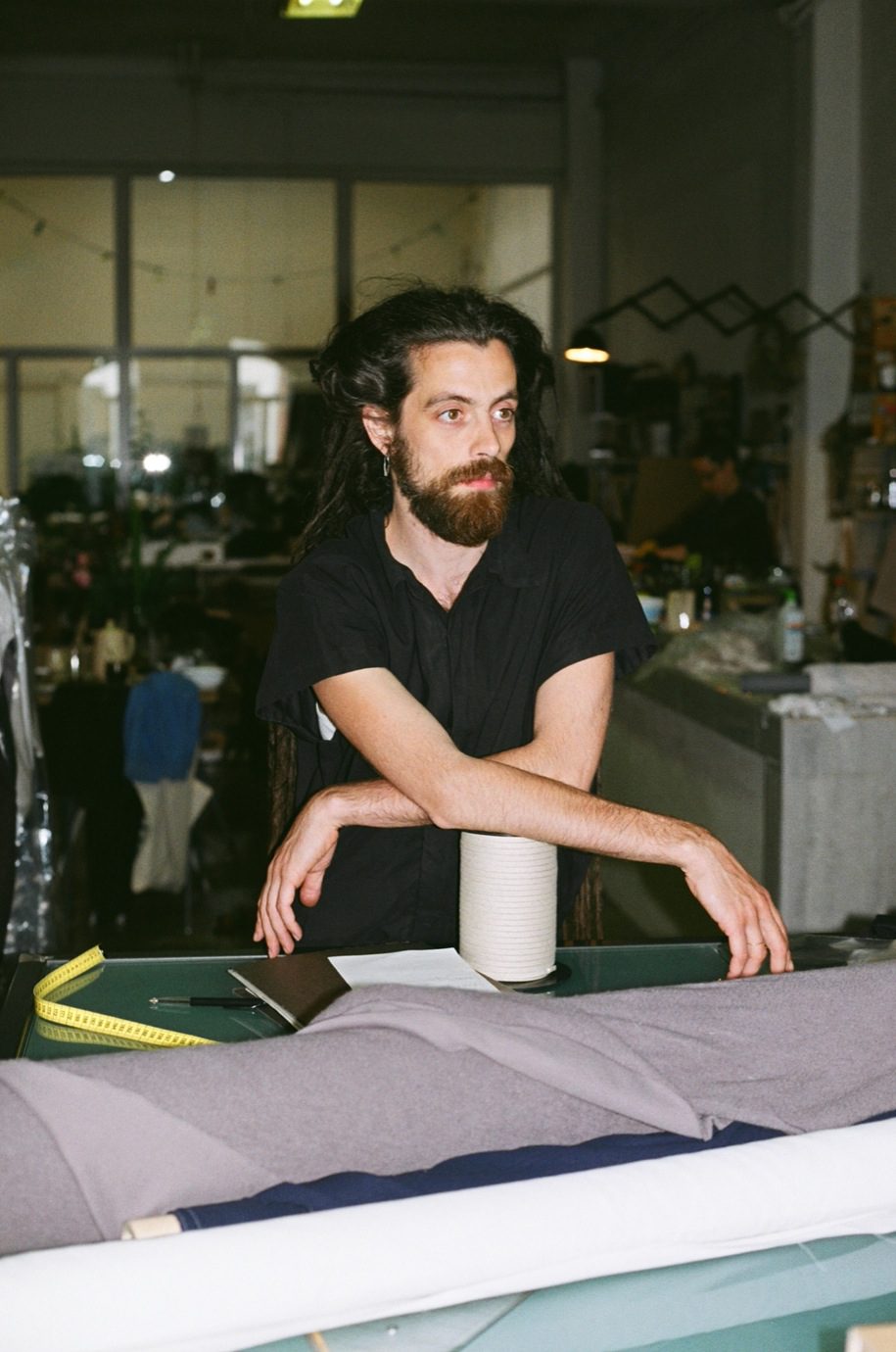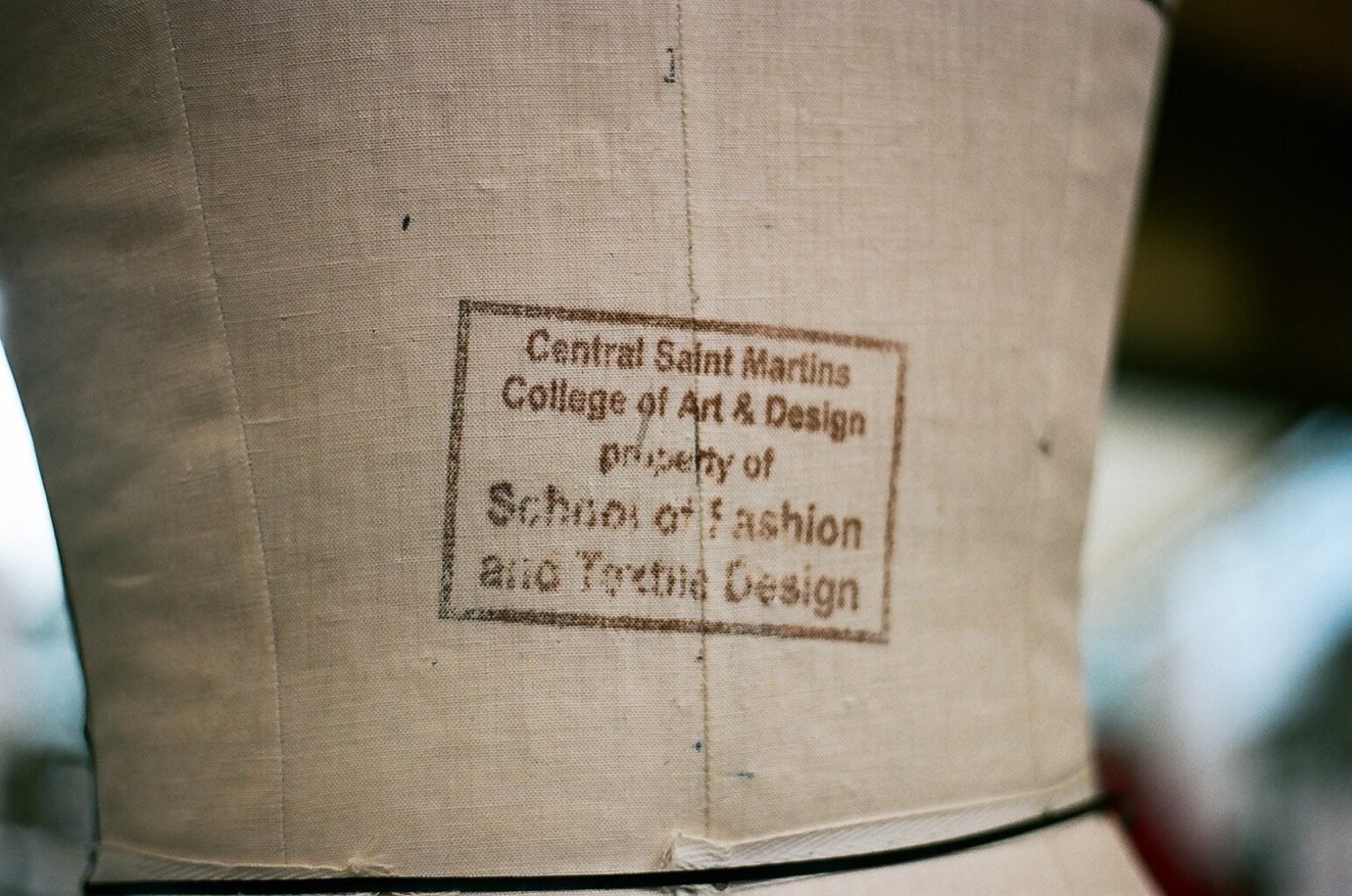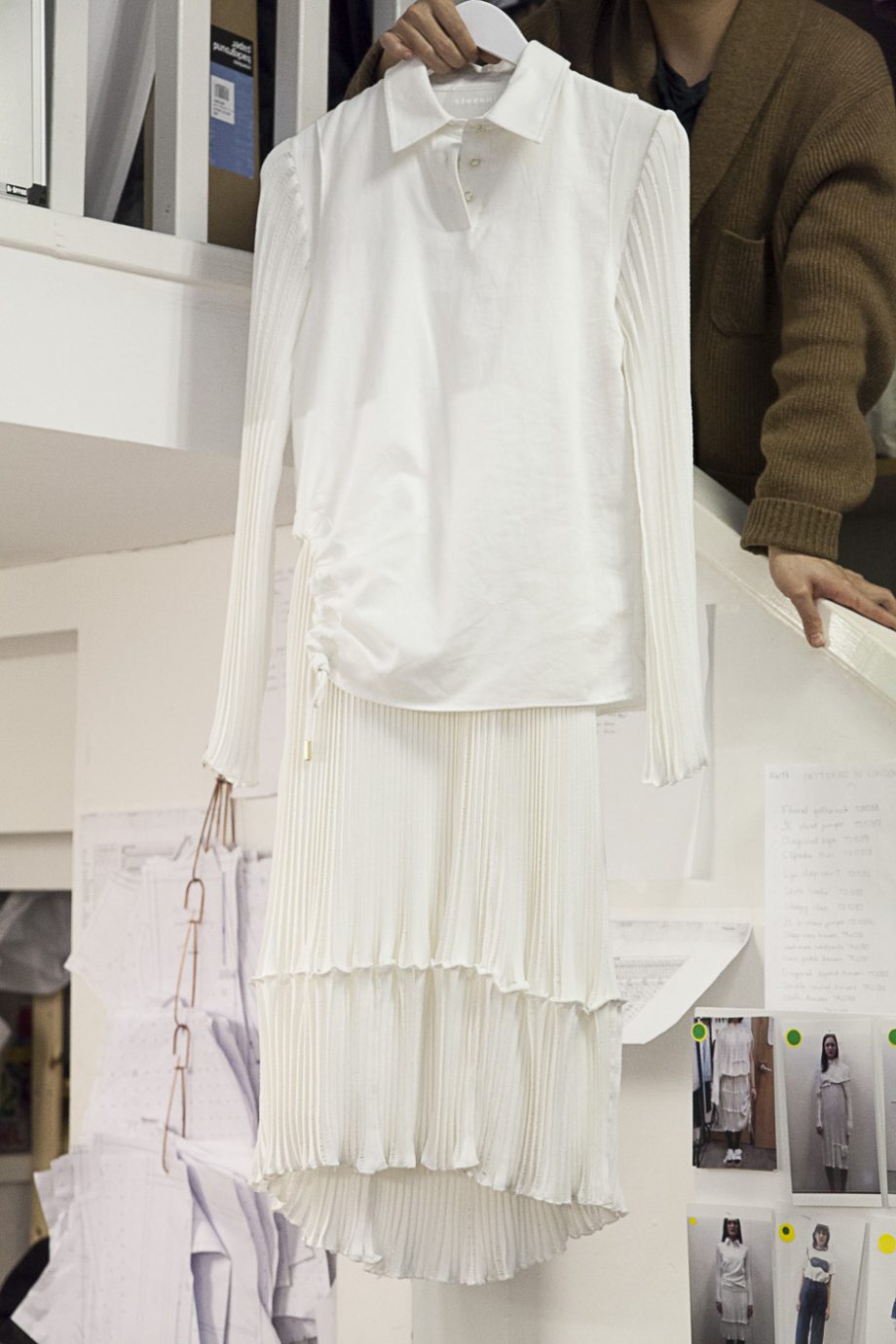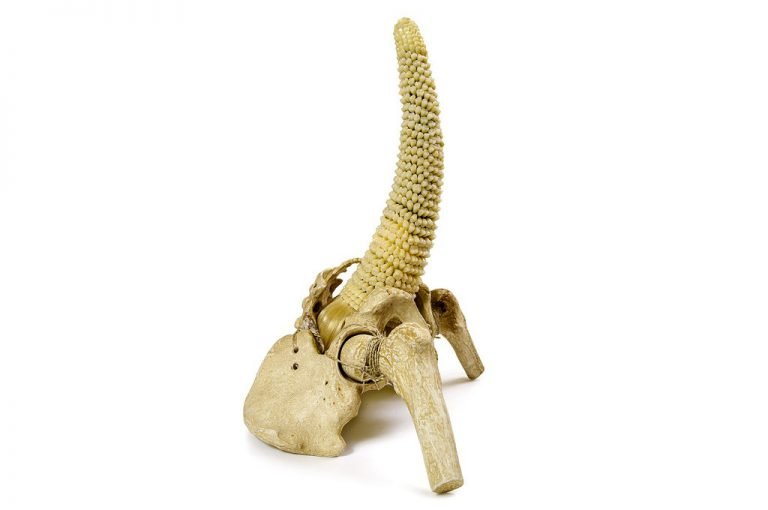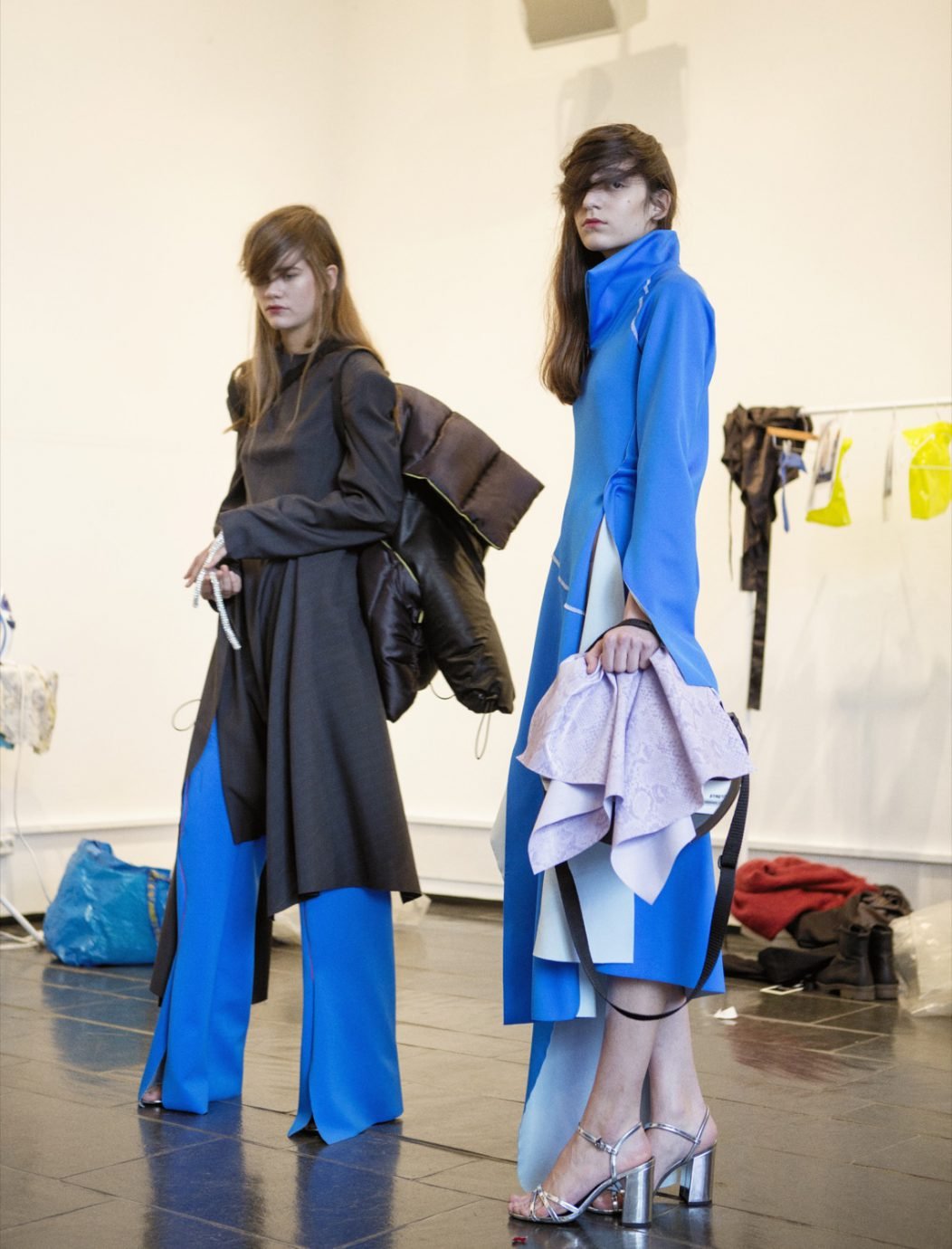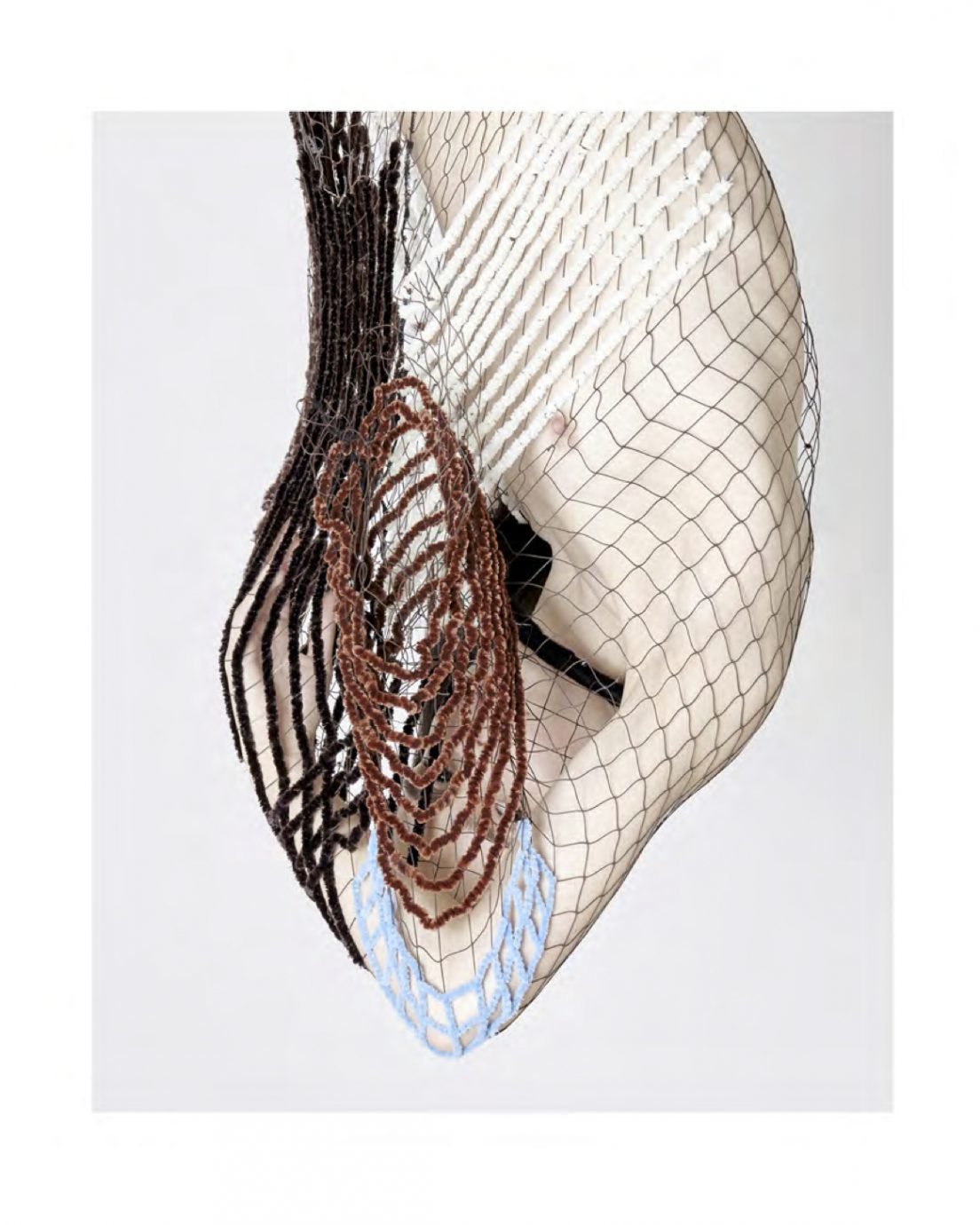What stage of the collection are we at right now? What do you do on a day-to-day basis?
We are in the midst of the production phase, which means I am in daily communication with factories and fabric sources. Most preparations have been made and the collection is about to be cut and sewn. Now it’s all about keeping up with the tight deadlines throughout the full chain. From fabric shipping, trims and details, grading, and cutting to sewing, all have to work to plan. And as with every complex system, things can go wrong, so there is no shortage of unexpected challenges each day. The challenge is to find some time to breathe as we are also starting with the new season, which means getting inspired and excited es as well as look at shapes, colors and discover new materials.
“Building a team and finding the right talents is very challenging, especially when you are independent and have limited resources.” – Melitta Baumeister
It might feel like decades have passed but I only join your team a little more than a year ago. From doing an internship to now becoming your designer, was there a specific moment in your head that you felt we’re clicking and decided to give me more responsibility?
Building a team and finding the right talents is very challenging, especially when you are independent and have limited resources. The process I have with the garments is very hands-on: we drape, shape the garment, try it on, find the right proportion, then we make the pattern right away and the first sample thereafter. It is a very intuitive making process that is focused on the actual garment, how it appears when wearing it, how much volume it has, what kind of feeling it gives away when worn. For this “shape-making” process to be effective, the skillset of draping and pattern making with the right understanding of the brand’s aesthetic is crucial. Besides the technical aspects, being able to communicate, being self-organized, and having that excitement for fashion cannot be understated. Having met you in the internship and seeing your development up till graduation gave me the confidence to think you would be a good fit for the team.
You’ve been in the business for approximately seven years. Even if I only join the team last year, your positivity, determination, and your strong belief in your own vision deeply impressed me. Is there a reason or faith that keeps moving you and the brand forward? How do you overcome failure and disappointment?
Whatever does not work for the brand, I don’t see it as a failure but as part of growth. There is something to be learned from every decision. As an entrepreneur, having emotional resilience is of course important to not let disappointments get close to you but use it as something to learn and grow from. MB is independently self-sustained and we grow with each season, which is something I am proud of and also what motivates me to keep developing the brand. It is beautiful to see how the label developed into a way to meet and connect with extraordinary humans. Whether it’s some of our incredible women who wear the brand, our ambitious partner boutiques, or once-in-a-lifetime moments like welcoming Rei Kawakubo to our showroom during PFW. It is rewarding to see the amount of appreciation you can get in return when you put something out there that is authentic and created with care.
“Being able to discuss the making of a product in person with your manufacturer is a great advantage. ” – Melitta Baumeister
During your career, what are some big changes that have happened in the fashion field and made you feel challenged?
Apart from the pandemic that brought an obvious interruption to the industry, it is the palpable turn towards sustainability and social awareness that I am very excited about. It is a positive change and has been long overdue. Every brand and especially the big players need to be held accountable for the impact they have on the environment. For us, this change is more of a confirmation that the way we are operating is right. Producing locally and ethically, reducing overproduction to a minimum, and generally trying to reduce our carbon footprint in every step.
Personally, I would be more worried if nothing ever changed. It’s exciting to see the development, to see individuals gaining more agency over their lives, society, politics, big faceless companies, etc. The challenge is to keep your eyes open, to reflect, and be critical.
Our products are all made in New York and I remember you mentioned this is very important to you. Why did you make this decision and what are the pros and cons of local production?
Being able to discuss the making of a product in person with your manufacturer is a great advantage. It enables us to control the quality much better and ensures that we won’t need to compromise the designs as we can overview all possible changes and improvements that might occur. I’ve also noticed that we have been able to avoid a lot more waste since miscommunication problems have been eradicated. Beyond that, having a personal relationship with the makers of the product I am putting out there is something I value dearly. It is a great privilege to have the history and the talent of New York City’s garment manufacturing at hand. It’s such a special place that is at the heart of this city’s success and I am sad to see it being pushed out and getting gradually disregarded.







